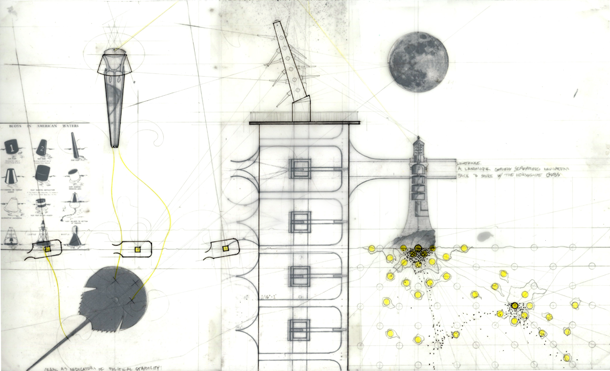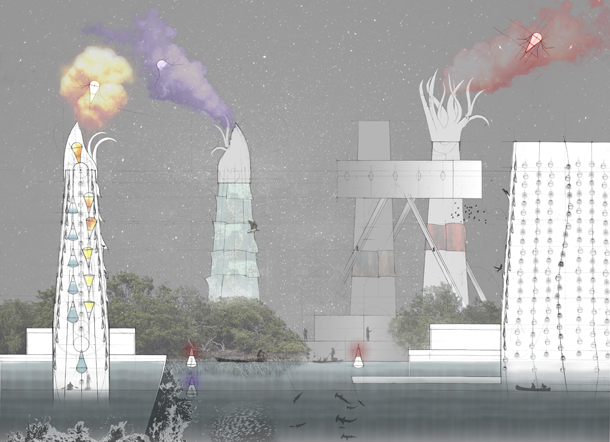[Animals, with their myriad superhuman senses, can teach us new unprecedented ways of occupying space. Shared spaces can allow us to mentally occupy each other, sensing our spaces with new eyes, new ears, new antennae, new tentacles.]
Decompositions II : Tidal Shore [Lighthouse]
Can design bridge land and water? Could shared spaces teach us what it’s like to occupy underwater spaces, and navigate through oceans and waterways?
Corals are small, spineless animals that can huddle together to form their own architecture – underwater cities teeming with biodiversity. The reefs create a spectrum of underwater spaces and microclimates, ideal for thousands of underwater species. Corals understand when the water and currents are perfect for their propagation. During a full moon in midwinter, when tides are high and currents are strong, an entire reef will spawn simultaneously. The spawn cloud the water in their density, flowing on the ocean currents to find fertile ground for a new reef. A shipwreck often acts as this fertile ground. As it rusts into nothingness, it provides excellent scaffolding for a new reef to begin forming over the coming decades.
During the same full moon, horseshoe crabs are navigating from their underwater habitats to various shorelines. The crabs perform their mating ritual on the sand before decomposing into nutrients for the shore and the ocean.
Can human wayfarers partner with the migration rituals of these ancient animals to navigate the open ocean and sense the underwater worlds?
In this design scenario, buoy devices are designed to follow the migrating crabs and spawning coral, beckoning seafaring humans through underwater dangers to the safety of abundant shores.
Seafaring refugees, migrating horseshoe crabs, and spawning coral gametes find their way together to a safe shore. Ships are sunk to provide habitats for the species, while humans inhabit the spaces above the waves. The ships are retrofitted with smokestacks, where horseshoe crab carcasses are strung up and dried to be used as fertilizer. Smoke signals – byproducts of water filtration and fertilization – are sent off on wind currents to signal other seafaring refugees and their underwater partners to the shore.
Our perception grows as our architecture decomposes. Interactions across species allow us to occupy the animal, sensing their watery habitats with their ancient senses. The further the decomposition, the more opportunities there are for shared spaces between species, and the more opportunities there are for occupying the other.










